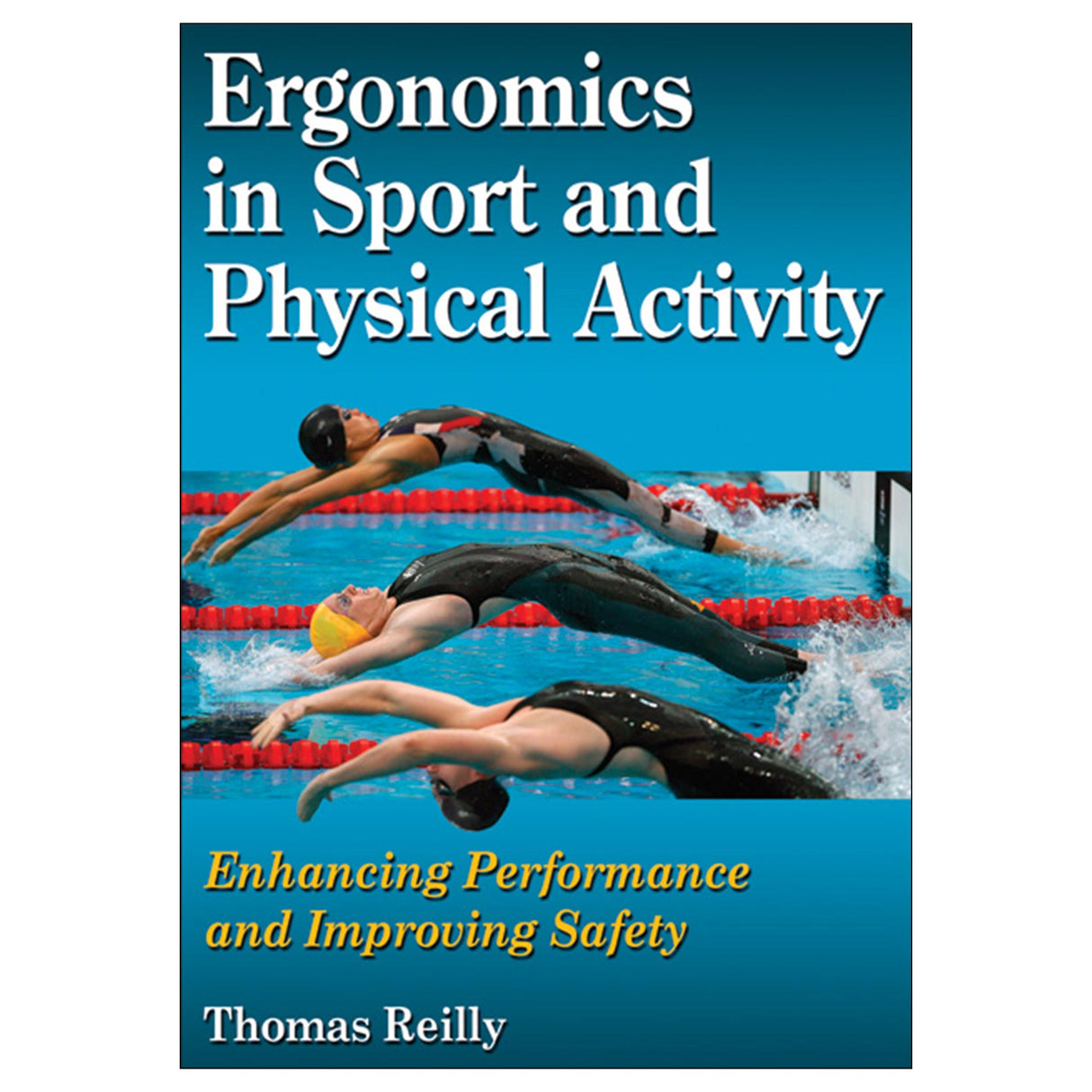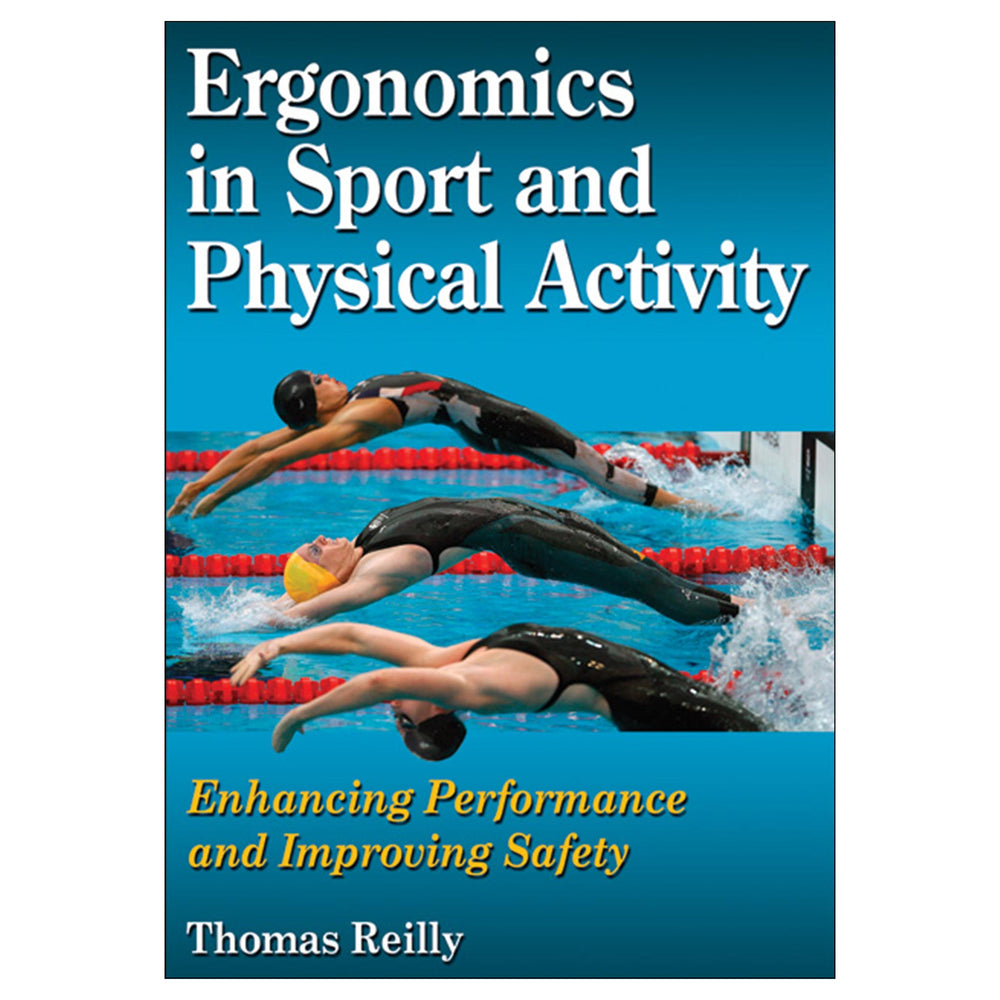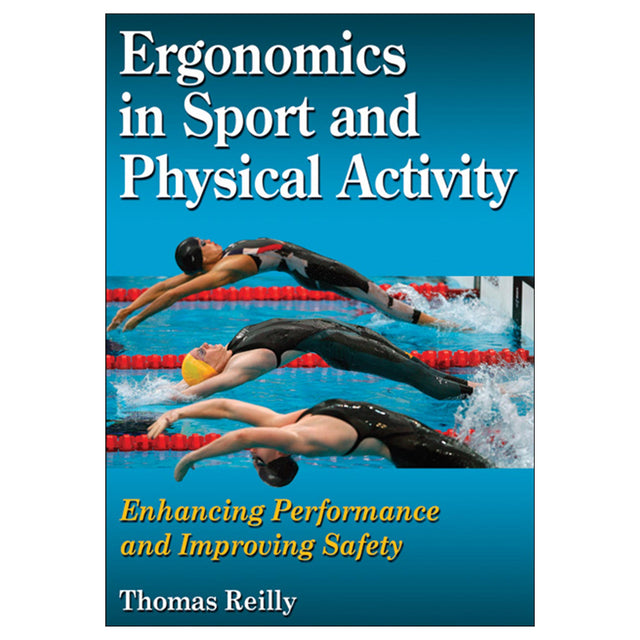Ergonomics in Sport and Physical Activity
Enhancing Performance and Improving Safety
Author: Thomas Reilly
$80.00 USD
Ergonomics in Sport and Physical Activity: Enhancing Performance and Improving Safety is the first text to provide an in-depth discussion of how the principles of ergonomics can be applied in the context of sport and other physical activities to reduce injury and improve performance. The textblends concepts from biomechanics, physiology, and psychology as it shows how ergonomics is applied to physical activity.
This comprehensive text outlines methods for assessing risk in and procedures for dealing with stress, eliminating hazards, and evaluating challenges posed in specific work or sport environments. It discusses issues such as the design of effective equipment, clothing, and playing surfaces; methods of assessing risk in situations; and staying within appropriate training levels to reduce fatigue and avoid overtraining. The text not only examines sport ergonomics but also discusses ergonomic considerations for physically active special populations.
Ergonomics in Sport and Physical Activity explains what ergonomics is, how ergonomists solve practical problems in the workplace, and how principles of ergonomics are applied in the context of sport and other physical activities when solving practical problems related to human characteristics and capabilities. The text shows readers how to improve performance, achieve optimal efficiency, enhance comfort, and reduce injuries by exploring topics such as these:
Essential concepts, terms, and principles of ergonomics and how these relate to physical activity Physical properties of the body and the factors limiting performance Interactions between the individual, the task, and the environment Injury risk factors in relation to body mechanics in various physical activities Injury prevention and individual protection in the review of sports equipment and sports environments Comfort, efficiency, safety, and details of systems criteria in equipment design.This research-based text uses numerous practical examples, figures, charts, and graphs to bring the material to life. In addition, descriptions of technological advances show where we have been and how technology has advanced the field. Through the book’s discussion of the various stressors and adaptive mechanisms, readers will learn how to cope with various environmental conditions. They will also learn how various training modes can be used to alter sport-specific capabilities and enhance performance.
Presenting a wide range of approaches, theoretical models, and analytical techniques, Ergonomics in Sport and Physical Activity: Enhancing Performance and Improving Safety illustrates the potential for ergonomics to be extended across recreation, competitive sport, and physically active work environments. Bridging the gap between ergonomics and exercise science, this unique text will assist both health care and exercise professionals in developing an improved awareness of how human capabilities are best matched to physical activities.
Audience
A reference for biomechanists, exercise physiologists, ergonomists, physical and occupational therapists, athletic trainers, sports physicians, personal trainers, and fitness specialists. Also a text for physical therapy students.Preface
Introduction
Part I. Risk Factors
Chapter 1. Physical Properties of Human Structures
Monitoring Activity Demands
Assessing Individual Characteristics
Assessing Physiological Capabilities
Assessing Mental Load
Overview and Summary
Chapter 2. Health and Safety
Injuries
Predisposition to Injury
Overtraining and Overreaching
Immunosuppression
Risk Assessment
Risk Taking and Fun
Spectator Safety
Human Ethics and Risk
Overview and Summary
Chapter 3. Environmental Stress
Thermoregulation
Altitude
Air Quality
Noise
Overview and Summary
Chapter 4. Circadian Rhythms
Training and Time of Day
Sleep–Wake Cycle
Travel Fatigue and Jet Lag
Sleep Deprivation or Disruption
Nocturnal Shift Work
Overview and Summary
Part II. Sport Ergonomics
Chapter 5. Ergonomics Models and Training Modes in Sport and Leisure
Fitting the Task to the Person
Generic Models
The Training Component
Technological Training Aids
Overview and Summary
Chapter 6. Competitive and Training Stress in Sport
Physiological Loading
Spinal Loading
Physical Loading
Psychological Loading
Overview and Summary
Chapter 7. Sports Equipment and Playing Surfaces
Sports Implements
Sport Surfaces
Sports Clothing
Sport Shoes
Protective Functions of Sports Equipment
Personal Protective Equipment
Overview and Summary
Part III. Ergonomics in Physical Activities
Chapter 8. Fitness for Work
Military Personnel
Prison Officers
Police Officers
Firefighters
Bus Workers and Postal Workers
Drivers
Ambulance Workers
Forestry Workers
Beach Lifeguards
Professional Divers
Workplace Fitness Programs
Overview and Summary
Chapter 9. Special Populations
Young People
Women
Elderly People
Athletes With Disabilities
Match Officials
Overview and Summary
Chapter 10. Clinical Aspects
Predispositions to Injury
Musculoskeletal Loading
Overreaching
Warming Up and Cooling Down
Recovery Process
Prophylactic Measures
Supplements in Clinical Contexts
Artificial Neural Networks
Overview and Summary
Chapter 11. A Holistic and Nutritional Ergonomics Perspective
Participatory Ergonomics
Human Enhancement Technologies
Performance and Cognitive Enhancement
Historical Perspective on Drug Use
From Clinic to Gymnasium
Nutritional Supplements and Over-the-Counter Drugs
Global Ergonomics
Overview and Summary
Afterword
References
Index
About the Author
“The book shines. I have not found any other book that interweaves two concepts [sport science and ergonomics] so successfully.”
—Doody’s Book Review (5-star review)





